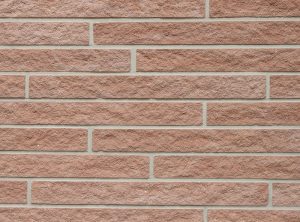The Versatility and Appeal of Thin Brick
Thin brick, also known as brick veneer, is a lightweight and versatile construction material that replicates the look of traditional brick. It is available in various forms, including thin brick veneer, thin brick tile, and thin brick wall panels. A particularly popular variant is white thin brick, which brings a bright and fresh aesthetic to interior and exterior spaces.
Thin bricks come in a variety of styles, making them suitable for different applications. A thin brick backsplash can add a rustic touch to kitchens and bathrooms, while a thin brick fireplace enhances the coziness of a living room. For exterior applications, thin brick veneer significantly boosts a property’s curb appeal, offering a timeless, durable finish.
One of the primary advantages of thin brick is its size and ease of handling. Traditional bricks are heavy and require extensive structural support, whereas thin bricks are significantly lighter, making installation more straightforward. Most thin bricks measure approximately 7.5 inches in length, 2.25 inches in width, and 0.5 inches in thickness. Despite their reduced size, they maintain the durability and strength needed for long-term applications.
Aesthetically, thin bricks offer a broad range of colors, textures, and finishes. They can emulate natural stone or wood and provide a rustic or modern look depending on the style chosen. White thin brick, in particular, adds a bright and airy feel to a space, making it a favored option for many homeowners and designers.
Thin bricks are also a cost-effective alternative to traditional brickwork. Their production requires less raw material, making them more economical, and their lightweight nature simplifies the installation process, reducing labor costs. Furthermore, thin bricks are highly versatile and can be used in numerous applications, from interior feature walls to exterior façades, fireplaces, backsplashes, and even some flooring projects. Their adaptability allows them to be installed on surfaces that cannot support the weight of full-sized bricks, adding another layer of flexibility to their use.
Installation of thin bricks typically involves securing them with a specialized mortar, such as Laticrete, which allows adherence to various surfaces, including drywall, plywood, and concrete. Proper installation is crucial to ensuring durability, and it is always recommended to follow the manufacturer’s guidelines for best results.
Thin bricks offer an excellent blend of aesthetics and functionality, providing the classic appeal of traditional brick while incorporating modern benefits such as ease of installation and affordability. With proper care and installation, they can serve as a durable and stylish option for a wide range of indoor and outdoor applications.

